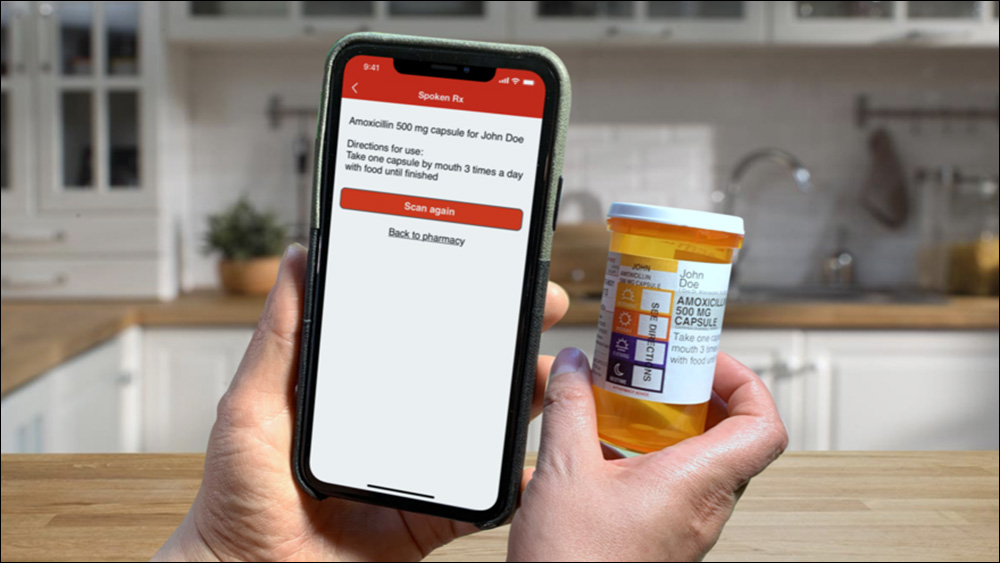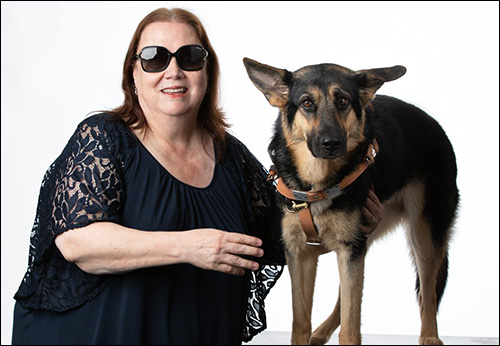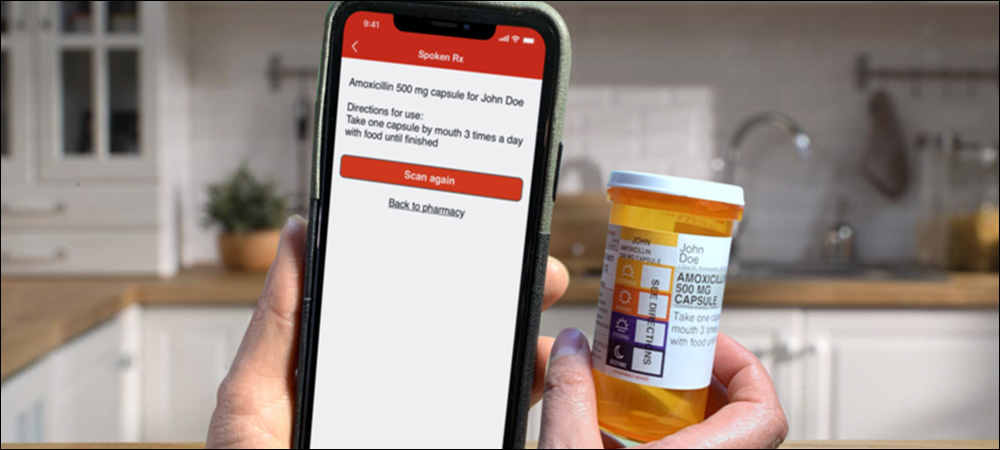CVS Pharmacy has released a Near Field Communication (NFC)-based solution that allows patients with visual impairments to access information regarding their prescribed medications, along with dosage instructions, by listening to it on their smartphone. The solution, known as Spoken Rx, is being rolled out as a feature in CVS’s app that enables users to hear spoken instructions when they tap their phone against an NFC tag.
The system enables same-day prescription requests for those with visual impairments, using CVS pharmacies, who need to be able to access instructions. CVS developed the solution with support from the American Council of the Blind (ACB), which provided input and feedback through testing and consulting in order to ensure the system would be beneficial and intuitive for use by people with visual impairments.

A phone’s NFC reader captures data, then the tag’s ID number prompts the app to read the medication’s name and instructions.
“Spoken Rx is a first-of-its-kind app feature directly connected to CVS’s internal dispensing software,” says Stephanie Cunha, CVS Health’s public relations manager. The system, she explains, can read radio frequency stickers to help eliminate challenges in differentiating and managing medication. Although there are mail-order services that offer braille or NFC-enabled labels upon request, such products cannot be ordered for same-day pickup (at a neighborhood pharmacy, for example).
Traditionally, those with visual impairments, when picking up medications at a drug store, have had to request help from others so they could understand what was printed on the labels. That makes medication management and proper dosing a challenge for anyone who cannot read a standard printed label. To address this challenge, Cunha says, “CVS Pharmacy listened to feedback and decided to develop its own solution.”
Most adults tend to take more than one medication, according to Kim Charlson, ACB’s immediate past-president and the executive director of the Perkins Braille and Talking Book Library. The majority of people who are blind or visually impaired are over age 60 and have lost their vision due to age-related conditions, and they are thus not braille readers. “They have to use alternative techniques” to know what is on the medication label, she says. In some cases, that requires some innovation.
Charlson says some patients get their medications mixed up. For instance, for one drug they may need to take a single pill twice daily, while another might need to be taken three times a day. “If you can see, you might use clues such as the pink pill twice a day and the blue pill three times a day,” she explains. Those without sight might scratch a mark in a bottle or attach a Velcro bump or a rubber band to differentiate the bottles. “Those are all makeshift alternative strategies, and they don’t help you with knowing exactly which medication it is” or its specific instructions. “Having the app allows you to be able to scan the RFID chip for the bottle.” It then speaks aloud not only the drug’s name but also the dosage instructions.
To use the system, patients must download CVS Pharmacy’s app from Apple’s online store or Google Play. They would then contact their local CVS pharmacy and ask to be enrolled in the Spoken Rx program. The pharmacy would create a note in the patient’s account to indicate that all future prescriptions should include Spoken Rx functionality. Only about 25 CVS pharmacies are participating in the program so far, but all are expected to be enrolled by the end of 2021.
While printing the label for a medication container, a pharmacist links an NFC sticker’s unique ID number with the prescription information, and the system’s text-to-speech functionality stores the spoken instructions in CVS’s cloud-based system. Each adhesive NFC label is affixed to the bottom of the prescription container. Upon receiving the medication, a visually impaired patient can take it home and access information via a smartphone. The patient would hold the phone within about 4 inches of the prescription container. The phone’s built-in NFC reader would then capture the data via a 13.56 MHz transmission, compliant with the ISO 14443 standard, and the NFC tag’s ID number would prompt the app to read the medication’s name and instructions.

Kim Charlson and friend Idabelle
“Spoken Rx is the first in-app prescription reader application to be developed by a national retail pharmacy,” Cunha states. There are visually impaired-based services through mail-order pharmacies, but that requires that a patient order in advance, then wait several days or a week for the drugs to arrive. That is not always convenient, Charlson says, if medicines need to be taken right away.
Some patients lack smartphones, or they don’t have phones with NFC functionality, so CVS’s next product will be an NFC speaker that patients can acquire and install at home. The speaker will come with a built-in NFC reader. Users will be able to place a prescription near the speaker, which will scan the chip and speak the instructions. The speaker will come with buttons that will provide forward, rewind and volume functions.
Future versions of the solution will include more instructions and details about medications, Cunha says, including a drug’s prescription number, as well as warnings and expiration dates. The Spoken Rx solution became available at 25 stores in May of this yeara, and rollouts are expected to continue worldwide through the end of 2021. By the end of 2020, Cunha says, 1,500 CVS Pharmacy locations are anticipated to be equipped to begin tagging prescription vials with the NFC stickers.
“Patients who are visually impaired sometimes need to rely on the assistance of their local pharmacist or the help of family or friends to ensure they are informed on medication information and dosage instructions,” Cunha says. “With the help of Spoken Rx, patients have another way to get this information anytime, anywhere, simply by using their smartphone device.”


